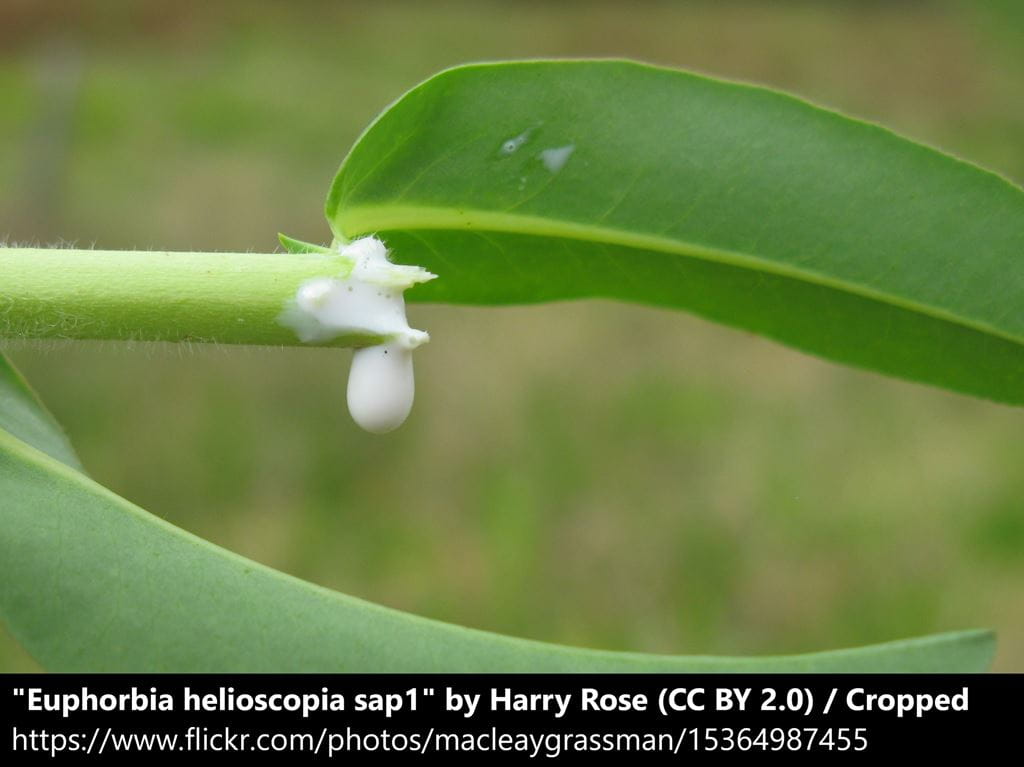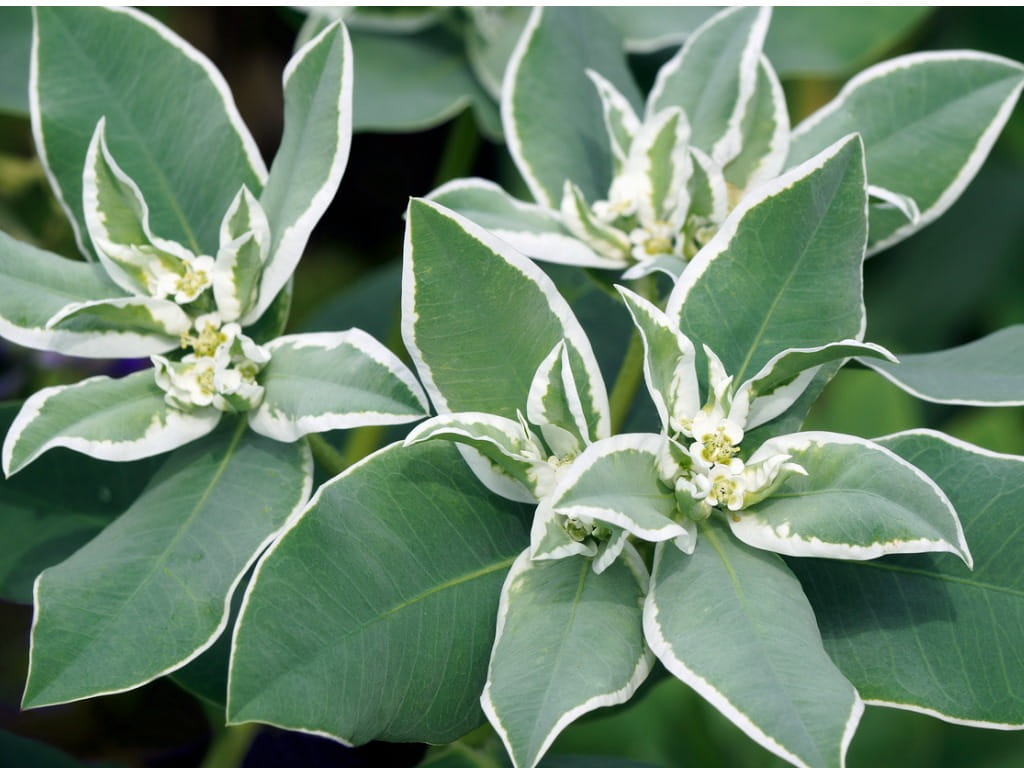Keep Away From Spurge Sap

The Bottom Line
Euphorbia, also known as spurges, is a genus of over 2000 different flowering plants. These plants contain a milky white sap that can be very irritating to the skin, eyes, and mouth. If someone is exposed to spurge sap, it is important to decontaminate the exposed area.

What is spurge?
Euphorbia, also known as spurges, is a genus of over 2000 different flowering plants. These plants are often used as decorative yard and garden plants due to their unusual flowers and hardiness. The festive poinsettia (Euphorbia pulcherrima) belongs to Euphorbia genus. Although they are quite beautiful, there are many varieties of spurges that can cause toxicity. All spurges have a milky, white, latex-like sap that can be very irritating.
How poisonous is spurge?
If the sap is released from the plant by chewing on it, it can cause irritation or a burning sensation of the lips, mouth, tongue, and throat. The irritation resulting from oral sap exposure can also cause a person to drool excessively. In severe exposures, vomiting, diarrhea, difficulty swallowing, and swelling of the mouth can occur. If someone has an oral exposure to the sap, have them rinse and spit with water to remove remaining plant material from their mouth. If their mouth is irritated, sucking on ice chips or frozen treats might help soothe some of the pain. If they are experiencing nausea or vomiting, keep them hydrated with small sips of clear fluids.
Skin exposures to spurge sap are much more common than mouth exposures and typically result in redness of the exposed skin, swelling, and blistering. If someone has had a skin exposure to spurge sap, have them remove any contaminated clothing and gently wash the exposed skin with soap and water. Rinsing with water alone will not be enough to remove the sap from the skin.
Eye exposures can result in redness, irritation, blurred vision, and temporary blindness. As with other types of exposure, decontamination is the most important step. Rinse the exposed eye with water at a comfortable temperature and pressure for 15-20 minutes. Do not use soap when rinsing the eyes.
If someone is exposed to spurge sap and is experiencing severe pain, severe swelling of the lips, tongue, or cheeks, inability to swallow, difficulty breathing, or vision changes they should be evaluated by a doctor.
If you suspect someone has been exposed to a spurge and is having a problem, get an immediate personalized recommendation online or call 1-800-222-1222. Both options are free, confidential, and available 24 hours a day.
Lindsy Liu, PharmD
Certified Specialist in Poison Information
Poisoned?
Call 1-800-222-1222 or
Prevention Tips
- When gardening or doing yard work, cover as much skin as you can to limit skin exposure to the sap.
- If working closely with Euphorbia, wear eye protection to limit eye exposures to the sap.
- Let your children know that no part of the plant should be played with or eaten.
- Keep spurges out of reach of children and animals.
This Really Happened
Case 1. A mother called Poison Control one morning because her two children had been exposed to a cypress spurge while playing in the woods the day before. They had smeared plant sap on their faces “like war paint” under their eyes, and the exposed skin started stinging. They went home and showered, but by the morning of the call, their eyes were swollen, and the children had puffy rashes on their faces. Poison Control recommended supportive care with antihistamines and a topical corticosteroid, which cleared the rashes.
Case 2. A father called Poison Control after he found his 11-month-old daughter with a pink flower from a spotted spurge in her mouth. She had no symptoms at the time of the call. Poison Control recommended rinsing her mouth with water and washing her hands with soap and water. The girl never developed symptoms.
For More Information
Crist C. Sap from garden plants can burn eyes. Thompson Reuters; 3 Oct 2017 [cited 25 May 2022].
Euphorbia tirucalli. StatPearls; Updated 17 May 2022 [cited 23 May 2022].
References
Spurge. Chicago: Encyclopædia Britannica; Revised 23 Aug 2021 [cited 26 May 2022].
Photo Attribution: "Euphorbia helioscopia sap1" by Harry Rose on Flickr (CC BY 2.0) / Cropped from original
Poisoned?
Call 1-800-222-1222 or
Prevention Tips
- When gardening or doing yard work, cover as much skin as you can to limit skin exposure to the sap.
- If working closely with Euphorbia, wear eye protection to limit eye exposures to the sap.
- Let your children know that no part of the plant should be played with or eaten.
- Keep spurges out of reach of children and animals.
This Really Happened
Case 1. A mother called Poison Control one morning because her two children had been exposed to a cypress spurge while playing in the woods the day before. They had smeared plant sap on their faces “like war paint” under their eyes, and the exposed skin started stinging. They went home and showered, but by the morning of the call, their eyes were swollen, and the children had puffy rashes on their faces. Poison Control recommended supportive care with antihistamines and a topical corticosteroid, which cleared the rashes.
Case 2. A father called Poison Control after he found his 11-month-old daughter with a pink flower from a spotted spurge in her mouth. She had no symptoms at the time of the call. Poison Control recommended rinsing her mouth with water and washing her hands with soap and water. The girl never developed symptoms.
